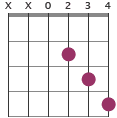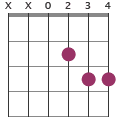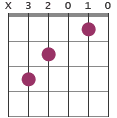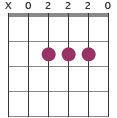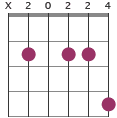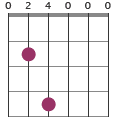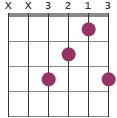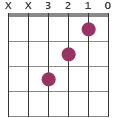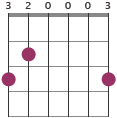EADGBD tuning
 The EADGBD tuning is not very common, but is an interesting alternative for finding new chord possibilities.
The EADGBD tuning is not very common, but is an interesting alternative for finding new chord possibilities.
This tuning can also be used by a beginner since many chords that normally involves three fingers only need two. The F major can also be played without barring strings.
As already disclosed by the name, to get this alternate tuning you should tune your guitar like this: E A D G B D. The re-tuning only involves one change, which is the highest (thinnest string).
More info
Including an octave perspective, the tuning is written as E2-A2-D3-G3-B3-D4, meaning the lowest string is an E note in the second octave, the second lowest string is an A note in the second octave and so on. Standard tuning reference: E2-A2-D3-G3-B3-E4.
Open chords
D
Dm
Cadd9
Aadd4
Bm7
Bm9
Em7
Em9
F
F6
G
G7
Comments
If you prefer an easier shape for Bm7, it's also possible to play the chord as X20200 (which omits the fifth). The same thing with Bm7, you could instead play X20220.
There are also many alternatives for G chords in open positions. G7, for example, can also be played as 323000.
More chords in EADGBD tuning
Other chords in this tuning:
D5: XX0230
D7: XX0214
D9/E: 000214
Dsus2: XX0232
Cmaj9: X32000
G6: 320002
G9: 303000
Bm/F#: XX4400
Progressions
Progressions in this specific tuning:
G (X10 9 0 8 0) - Dadd11(no5) (X54030) - Cadd9 (X32010)
This was an introduction to chords in the alternate EADGBD tuning, see also standard tuning.
